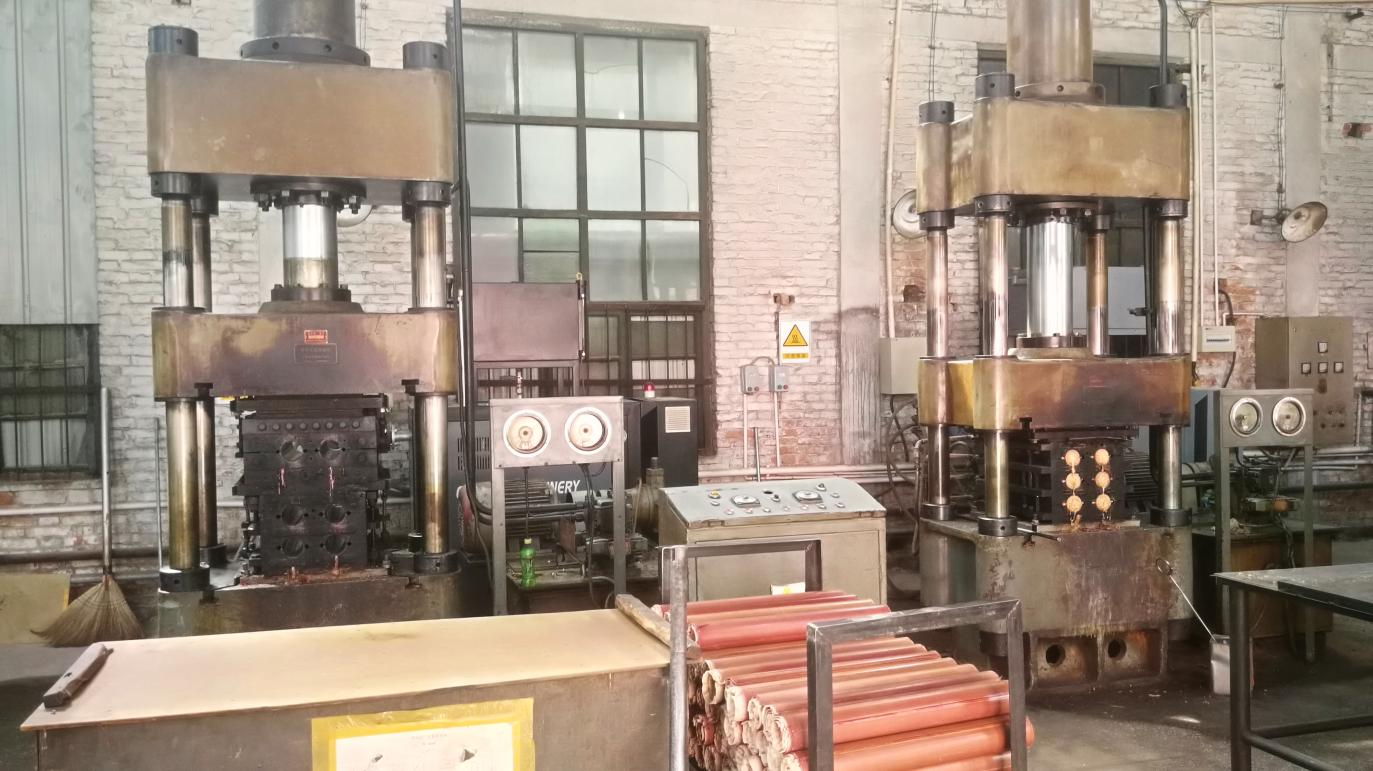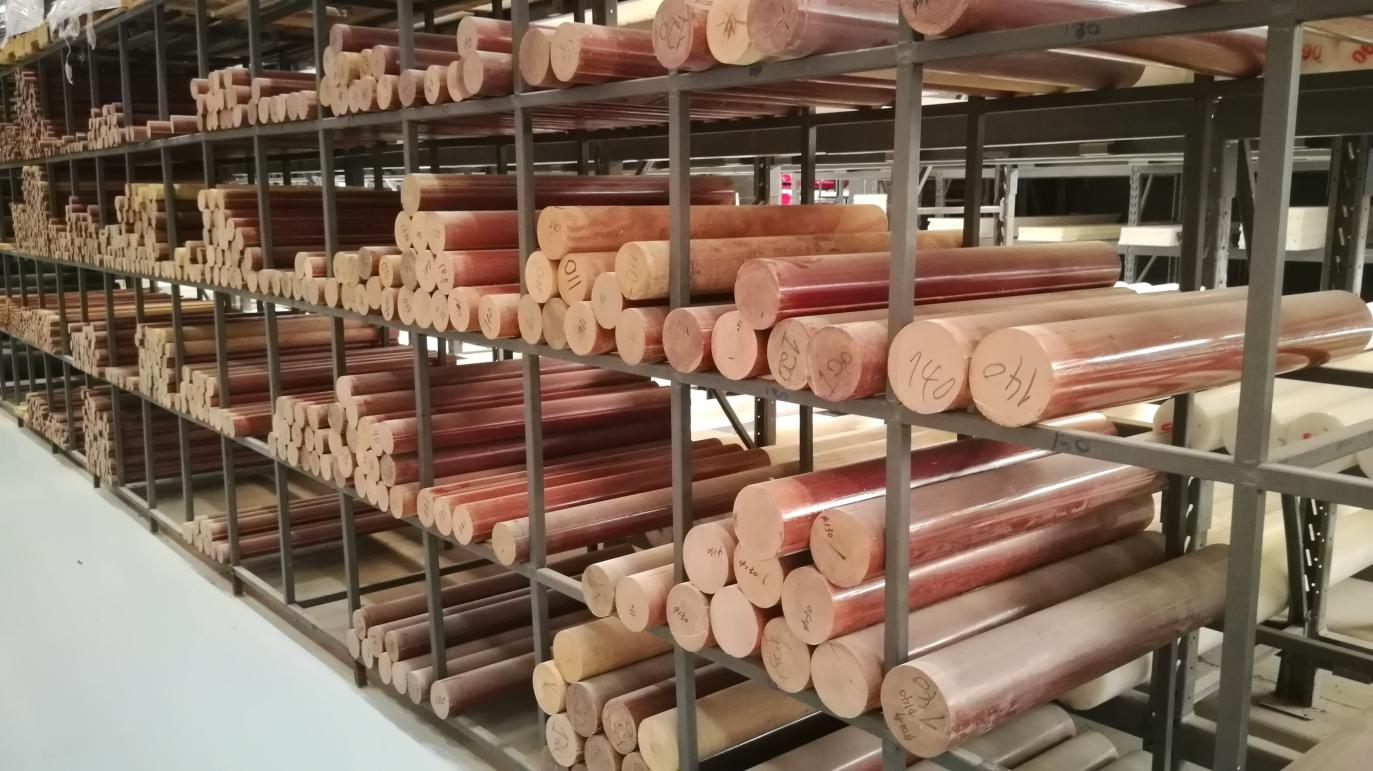Phenolic Cotton Fabric Laminated Rods: A Versatile Engineering Material
Introduction
Phenolic cotton fabric laminated rods represent a unique and valuable class of composite materials. They are crafted by impregnating multiple layers of cotton fabric with phenolic resin and then subjecting the assembly to high - pressure and high - temperature curing processes. This combination results in a material that exhibits a blend of mechanical, electrical, and tribological properties, making it suitable for a wide range of applications across various industries.
Composition and Manufacturing Process
1.Reinforcing Material - Cotton Fabric
The cotton fabric used in these rods is typically industrial - grade, such as canvas or linen. Cotton fabric offers several advantages. Its fibrous structure provides flexibility and a certain degree of toughness. The individual fibers within the fabric can absorb and distribute mechanical loads, enhancing the overall strength and impact resistance of the rod. Moreover, the porous nature of the fabric plays a crucial role in the self - lubricating properties of the final product, as will be discussed later.
2.Matrix Material - Phenolic Resin
Phenolic resin, derived from the reaction of phenol and formaldehyde, serves as the matrix material. It is a thermosetting polymer, which means that once cured, it forms a rigid, cross - linked structure. Phenolic resin imparts excellent binding properties, firmly adhering the cotton fabric layers together. It also contributes to the rod's chemical resistance, hardness, and thermal stability within a certain temperature range.
3.Manufacturing Steps
The manufacturing process begins with the impregnation of the cotton fabric layers in phenolic resin. This ensures that the resin penetrates the fabric thoroughly, coating each fiber. After impregnation, the resin - soaked fabric is wound around a mandrel, carefully arranging the layers to achieve the desired thickness and structure. The assembly is then placed in a press, where it is subjected to high pressure, usually in the range of 8 - 12 MPa, and elevated temperatures between 160 - 180°C. The curing process, which can last from 4 - 6 hours, allows the phenolic resin to cross - link and harden, transforming the layered fabric into a solid, cylindrical rod. Once cured, the rods may undergo additional machining operations, such as cutting, drilling, and turning, to achieve the final dimensions and surface finish required for specific applications.

Key Properties
1.Strength
Phenolic cotton fabric laminated rods offer a reasonable level of mechanical strength. Their bending strength typically ranges from 80 - 120 MPa, and compressive strength is around 100 - 150 MPa. While these values are not as high as those of some high - performance composites like carbon fiber - reinforced polymers, they are sufficient for many applications where moderate loads are involved. For example, in textile machinery, they can be used for components that experience low - to - medium mechanical stresses.
2.Impact Resistance
One of the notable mechanical properties of these rods is their excellent impact resistance. The fibrous nature of the cotton fabric acts as an energy - absorbing medium. When an impact force is applied, the fabric fibers can stretch, deform, and absorb the energy, preventing sudden failure of the rod. This makes them suitable for applications where the component may be subject to occasional shocks or vibrations, such as in some handheld tools or machinery with moving parts that experience sudden starts and stops.
3.Wear Resistance
The combination of self - lubrication and the mechanical properties of the material contributes to good wear resistance. In low - speed, dry - friction applications, these rods can operate for extended periods without significant wear. For instance, in printing presses, where parts are in constant contact and relative motion, phenolic cotton fabric laminated rods can provide reliable service, reducing the need for frequent part replacements and maintenance.
4.Chemical Resistance
These rods show moderate chemical resistance. They can withstand exposure to mild acids with a pH of 4 or higher and weak alkalis with a pH of 9 or lower. This makes them suitable for use in environments where they might come into contact with common chemical substances, such as in certain chemical processing plants or in equipment used for cleaning and maintenance in industrial settings. However, they are less resistant to organic solvents. Contact with solvents like ethanol, acetone, or benzene can cause swelling, softening, and degradation of the material, which limits their use in applications involving such substances.
5.Thermal Resistance
Phenolic cotton fabric laminated rods can effectively operate at temperatures up to approximately 100°C. Within this temperature range, they can maintain their mechanical and physical properties. Prolonged exposure to higher temperatures can cause the phenolic resin to degrade, leading to a reduction in the rod's strength and other performance characteristics. This thermal limitation restricts their use in applications that involve high - temperature environments, such as in some parts of furnaces or engines.
4.Machinability
These rods are highly machinable using standard metal - working tools and techniques. They can be easily cut, drilled, turned, and shaped to meet specific design requirements. The relatively soft nature of the cotton fabric - resin composite allows for efficient machining processes, with less tool wear compared to machining some harder materials. This machinability makes it possible to produce custom - made components quickly and cost - effectively, which is an advantage for manufacturers who need to create parts tailored to their unique applications.

Applications
1.Textile Machinery
In textile machinery, phenolic cotton fabric laminated rods are used in various components. Gears made from these rods can operate smoothly due to their self - lubricating properties, reducing the need for external lubrication systems. This not only simplifies the machinery design but also reduces the risk of lubricant contamination in the textile production process. Additionally, shafts and bearings in textile machines can be made of these rods, where their impact resistance and wear - resistance properties ensure long - term reliable operation.
2.Food Processing Industry
In the food processing industry, these rods find extensive use. Conveyor rollers made of phenolic cotton fabric laminated rods can transport food products without the risk of contaminating the food with lubricants or other foreign substances. Their self - lubricating and wear - resistant properties enable them to operate continuously in a food - safe environment. Other parts such as guides and supports in food processing equipment can also be made from these rods, providing a cost - effective and hygienic solution.
3.Hand Tools and Equipment
Phenolic cotton fabric laminated rods are commonly used in the manufacturing of hand tools. Handles for wrenches, pliers, and other manual tools are often made from these rods. Their lightweight nature, with a density typically ranging from 1.2 - 1.4 g/cm³, makes the tools easier to handle, reducing user fatigue during extended use. Additionally, their shock - absorbing capabilities provide a more comfortable grip, especially when the tool is used to apply force or when it may be subject to impacts.
4.Electrical and Electronics
In the electrical and electronics industry, phenolic cotton fabric laminated rods can be used for non - critical insulation components. While their electrical insulation properties are not as high as those of specialized electrical - grade laminates, they can provide basic insulation and mechanical support in applications such as low - voltage electrical enclosures, where a combination of mechanical strength and some level of electrical insulation is required.
Conclusion
Phenolic cotton fabric laminated rods are a versatile and practical composite material. Their unique combination of properties, including self - lubrication, impact resistance, machinability, and cost - effectiveness, makes them well - suited for a wide range of applications, especially in industrial machinery, hand tools, and some electrical applications. However, understanding their limitations, such as low mechanical strength for high - load applications, moisture sensitivity, and limited chemical and thermal resistance, is crucial for proper material selection. By carefully considering their properties and limitations, engineers and manufacturers can effectively utilize phenolic cotton fabric laminated rods to create reliable, efficient, and cost - effective products.
 EN
EN






















